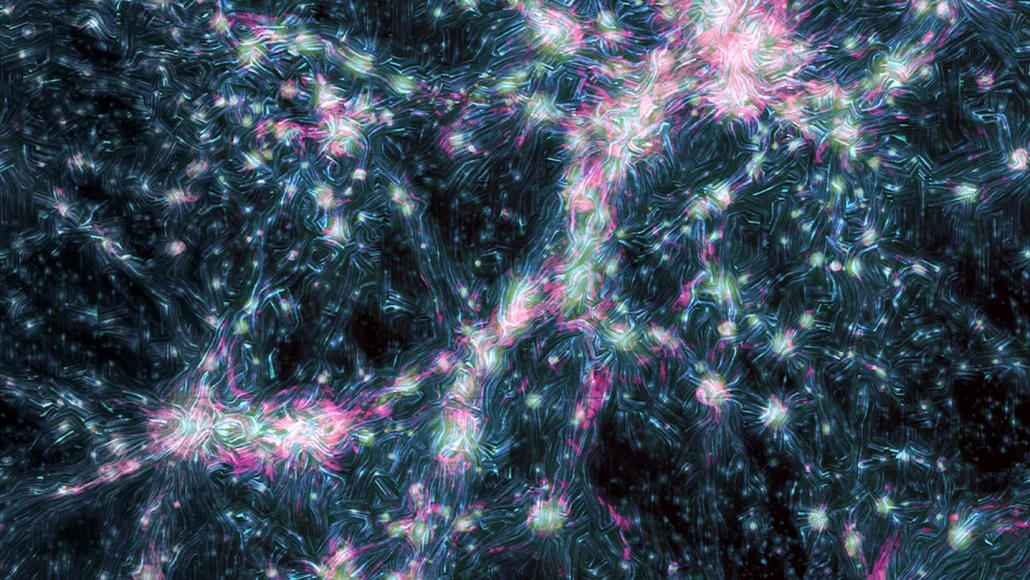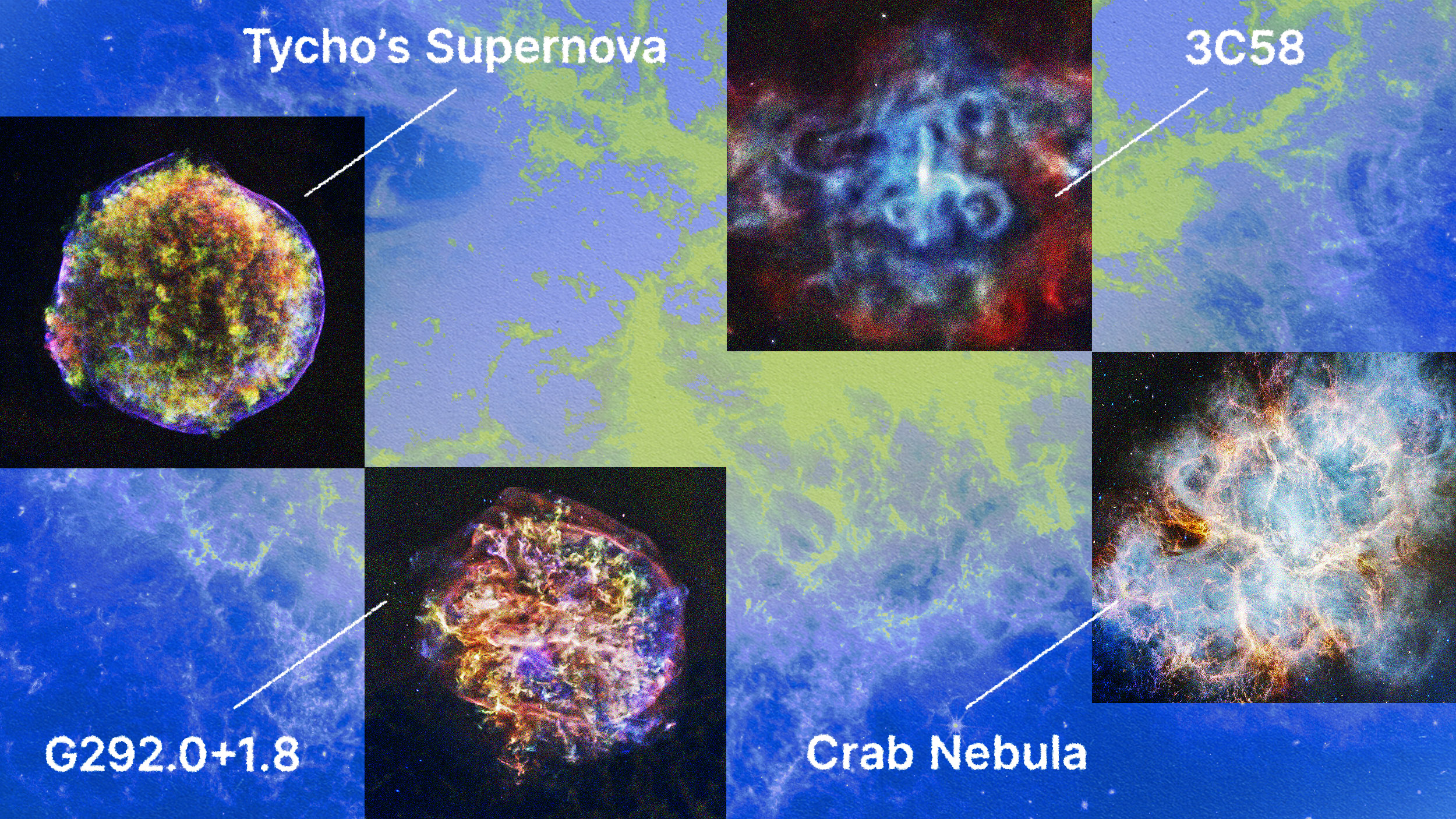Throwback Thursday: The Ten Brightest Stars in the Sky
Do you know all of them, and what makes them so bright?
Image credit: source unknown, but it contains #7 and #9 on the list, via http://st.gdefon.com/wallpapers_original/wallpapers/428170_orion_yupiter_betelgejze_rigel_aldebaran_pleyady_y_7408x4602_(www.GdeFon.ru).jpg.
“I’m hungry for knowledge. The whole thing is to learn every day, to get brighter and brighter. That’s what this world is about.” –Jay-Z
When you think of the night sky, you likely think about thousands of stars glittering against a pitch-black backdrop of night, something you can only truly experience far away from cities or any other sources of light pollution.
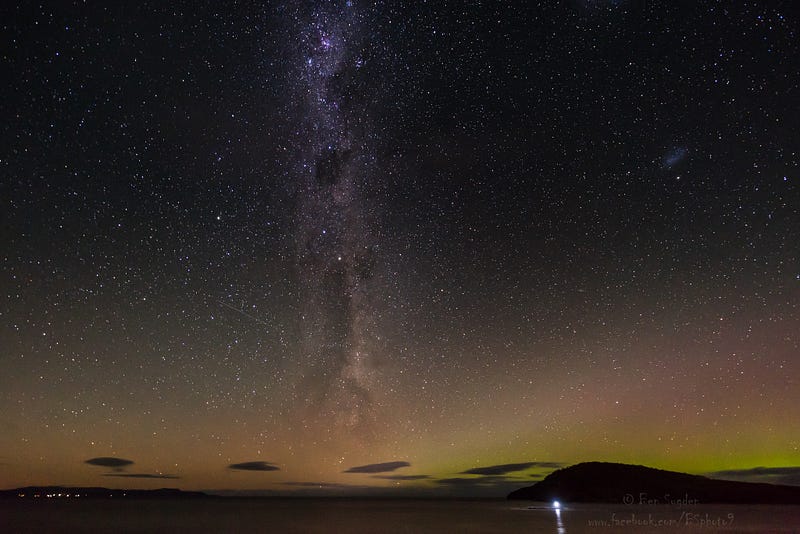
But what those of us who don’t experience such a sight regularly miss is that the stars that are visible from heavily light polluted, urban areas take on a whole new character when you view them under those dark conditions. Almost immediately, their color and relative brightness stands out from all the other stars in their vicinity, and each one has a story all its own.

For those of you in the northern hemisphere, star patterns like the Big Dipper or the famed “W” in Cassiopeia might be the ones you can identify first, while in the southern skies, the Southern Cross is probably the best-known and most commonly sought. Yet none of these stars are among the 10 brightest!
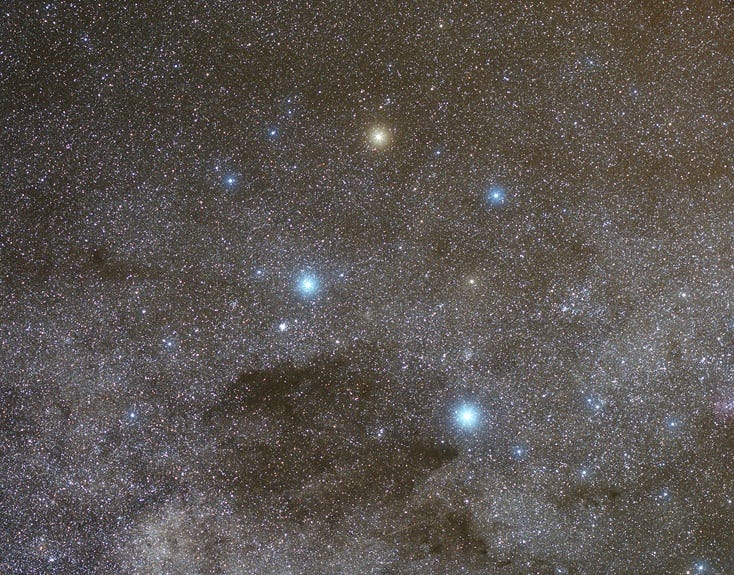
Each star has its own life cycle that its destined for from the moment of its birth. When every star forms, it’s dominated by hydrogen — the most common element in the Universe by far — and its fate is determined solely by its mass. Stars with as little as eight percent of our Sun’s mass can still ignite nuclear fusion in their core, fusing hydrogen into helium, with the energy eventually migrating to the surface and releasing out into the Universe. These low-mass stars are red (due to their low temperatures), dim, and burn through their fuel slowly, with the longest-lived ones destined to live for literally trillions of years.
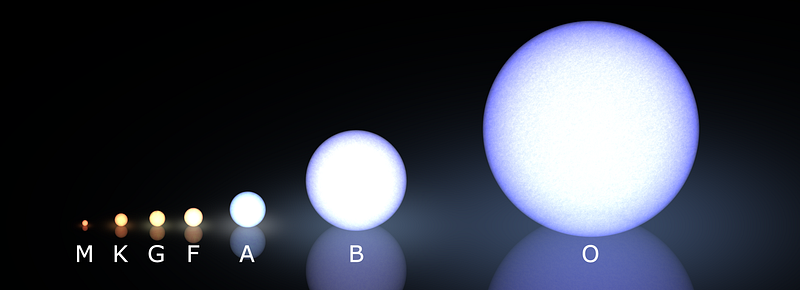
But the more mass you pile on there, the hotter the star’s core gets, and the greater the region that nuclear fusion takes place in. By time you reach our Sun’s mass, you’re up in the G-class of stars, and your lifetime is just a hair over ten billion years. Double the Sun’s mass, and you’re an A-class star, with a bright blue color, and a lifetime that’s under two billion years. And if you’re talking about the most massive stars — the O- and B-class stars — you’re talking about lifetimes that are only a few million years before you run out of hydrogen fuel in your core. And to no one’s surprise, the heavier, hotter stars are also significantly more luminous, intrinsically. A typical A-class star might be 20 times as bright as our Sun, while the most massive stars may be tens of thousands of times as bright!
But eventually, no matter how you began your life, you’ll run out of your core hydrogen fuel.
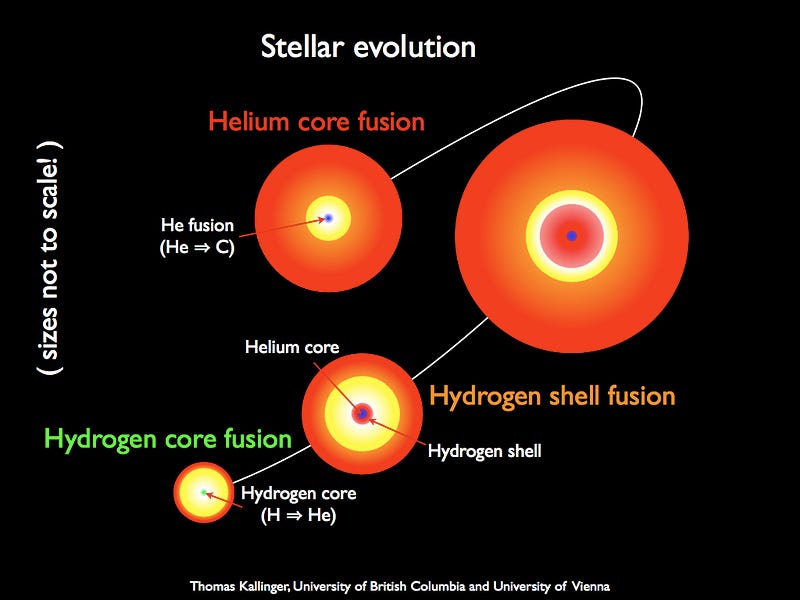
When that happens, your star starts burning heavier elements, expanding into a giant star that’s cooler but much more luminous than your initial star. Even though the giant phase is much shorter-lived than the hydrogen-burning phase, its incredible brightness allows it to be seen prominently from far greater distances than the original star ever could be.
With all of that in mind, what are the ten brightest stars in the sky? Let’s count them down.
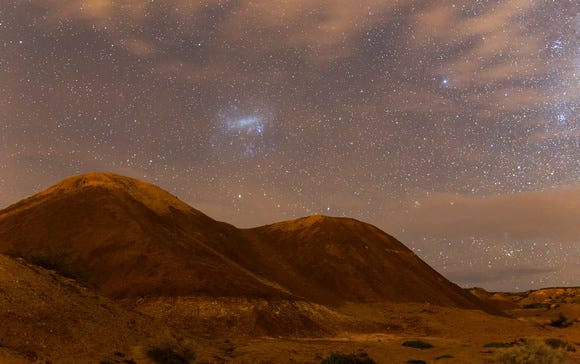
10. Achernar: A bright blue star that’s seven times as massive as our Sun and over 3,000 times as luminous, Achernar is one of the fastest-spinning stars known to humanity! It spins so quickly, in fact that its equatorial radius is some 56% larger than its polar radius, and the temperature at its polar surface — since it’s so much closer to the stellar core — is about 10,000 Kelvin hotter. But at 139 light-years away, it’s not very close to us at all.
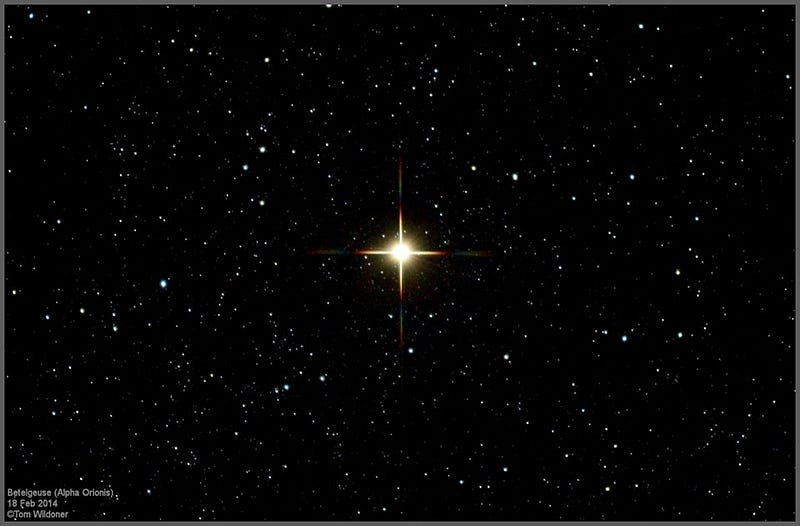
9. Betelgeuse: A red giant star located in the constellation of Orion, Betelgeuse was a bright, hot O-class star before running out of hydrogen fuel and switching to helium. Despite its low temperature of around 3,500 Kelvin, it’s more than 100,000 times as luminous as our Sun, meaning it can crack the top 10 most luminous stars despite being some 600 light-years distant. In the next million years — at some point — Betelgeuse is likely to go supernova, becoming the brightest star in the sky (and likely visible during the day) temporarily.
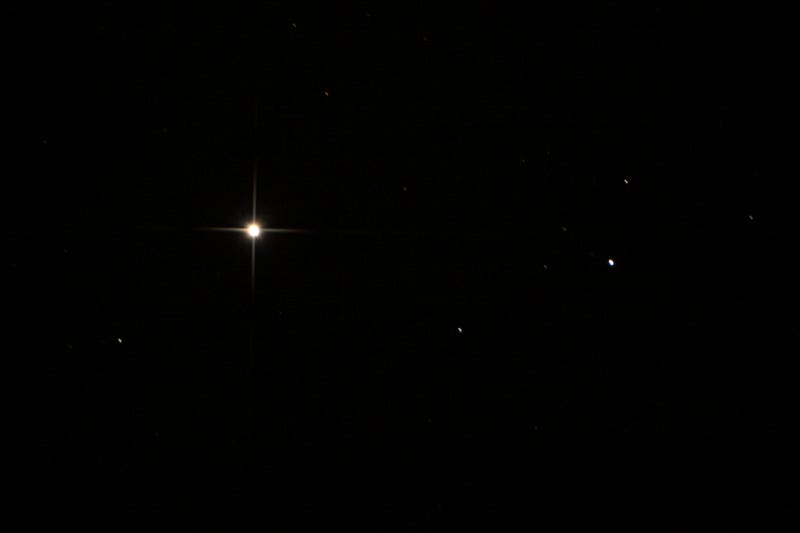
8. Procyon: This star is very different than the others we’ve looked at so far. Procyon is a humble F-class star — a mere 40% more massive than the Sun — that’s on the cusp of running out of hydrogen in its core, and hence is a subgiant star that’s presently evolving. It may only be seven times as luminous as our Sun, but it’s a mere 11.5 light-years away, and hence can outshine all but seven stars in our night sky.
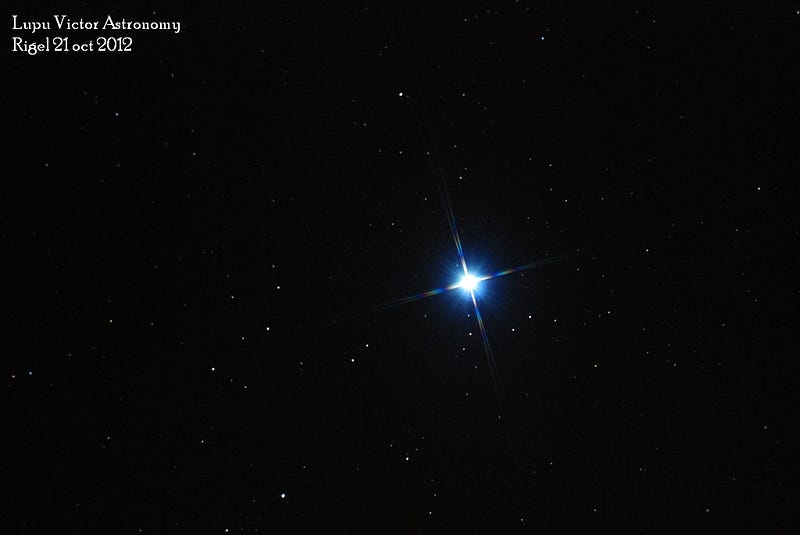
7. Rigel: Betelgeuse, in Orion, isn’t even that constellation’s brightest member; that distinction goes to the even more distant Rigel. At some 860 light-years distant but with a temperature of “only” 12,000 degrees, Rigel is not a main-sequence star, but a very rare blue supergiant! Some 120,000 times as luminous as our Sun, it shines as brightly as it does not because of its proximity to us, but because of how intrinsically bright it is.
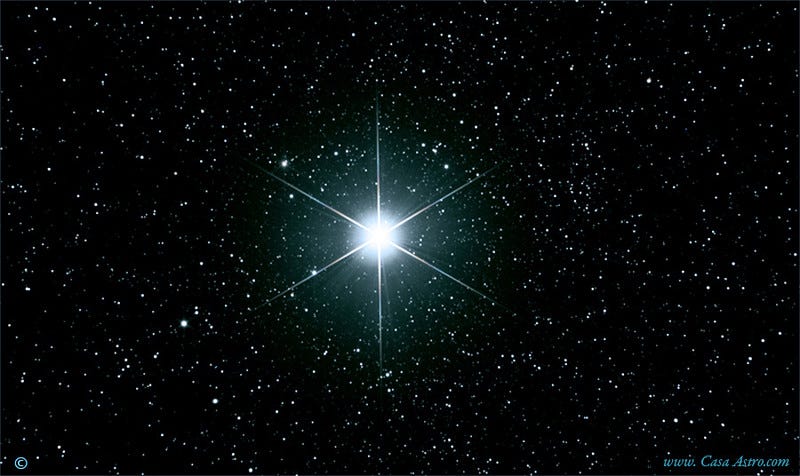
6. Capella: This is a strange one, because it’s actually two red giant stars that are the same temperature as our Sun, but each one is about 78 times as bright as our Sun is. At a distance of 42 light-years, it’s this combination of intrinsically bright, relatively close and the fact that there are two of them that allows Capella to reach this high on the list.
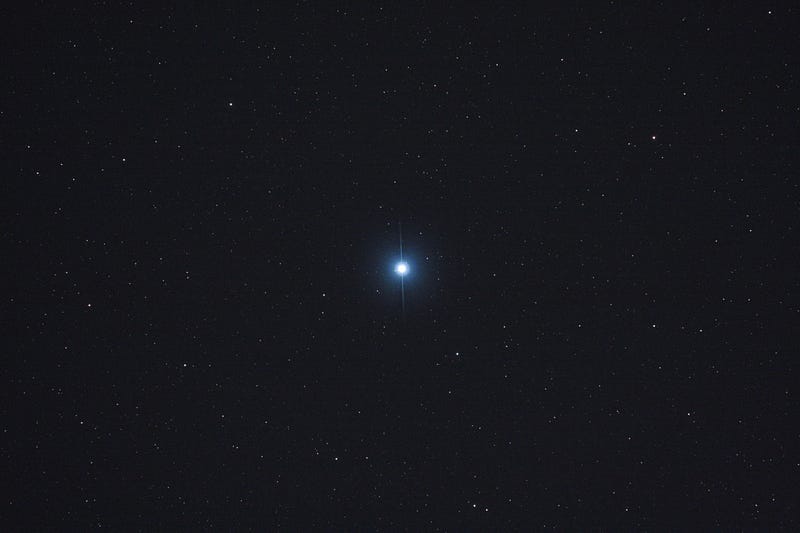
5. Vega: The brightest star in the Summer Triangle and the home of aliens in the movie Contact, Vega used to be the standard for “0-magnitude” for astronomers. At only 25 light-years away, Vega is a main-sequence (hydrogen-burning) star that’s one of the brightest A-class stars we know of, and a young one that’s only 400-to-500 million years old. Nevertheless, it’s forty times as luminous as our Sun, and hence it’s the fifth brightest star in the sky! Of all the stars in the northern hemisphere, Vega is second only to…
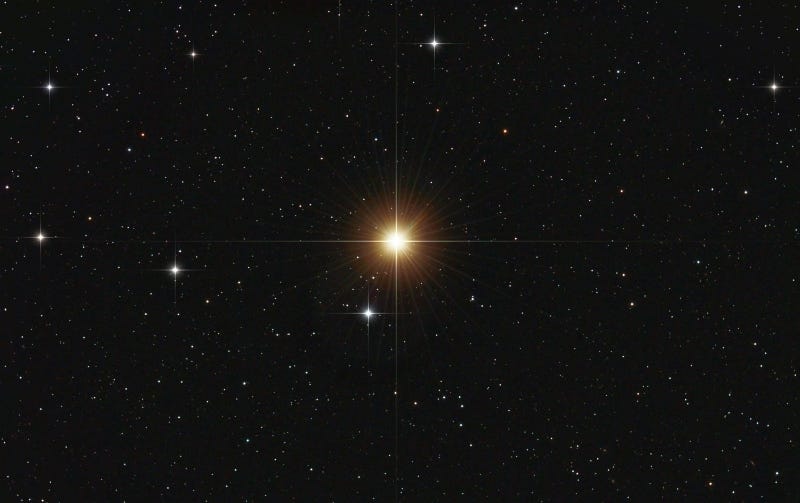
4. Arcturus: An orange giant — a star somewhere in between Procyon and the Capella stars from an evolutionary standpoint — Arcturus is the brightest star in the northern hemisphere and easy to find by following the “arc” of the Big Dipper’s handle. At 170 times the luminosity of our Sun, it may move up this list as it continues to evolve and become even more luminous! It’s a mere 37 light-years distant, and there are only three stars brighter than it, all located in the southern skies.
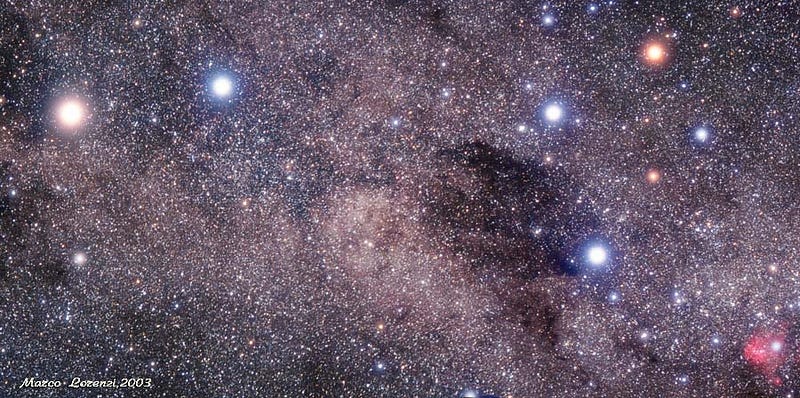
3. Alpha Centauri: Actually a trinary star system, Alpha Centauri is a star whose main component is very similar to our Sun, and is intrinsically the dimmest of any star in the top 10 by quite a bit. But the Alpha Centauri star system consists of the closest stars to us in the Universe, and so its location is responsible for why it appears so bright, at just 4.4 light-years distant. That’s a very different story than the #2 star on the list for sure.

2. Canopus: A supergiant star of a whitish color, Canopus is 15,000 times as luminous as our Sun, and hence the second brightest star in the night sky despite being 310 light-years distant! At ten times the mass of our Sun and 71 times the size, it’s no wonder it shines so brightly, but it couldn’t crack the top spot. Instead, the brightest star in the night sky is…

1. Sirius: Twice as bright as Canopus, northern skywatchers can often spot blue Sirius in the winter rising behind the constellation of Orion. It often glitters and twinkles furiously, as its bright light can penetrate through lower altitudes of our atmosphere than any other star, still shining brightly. It’s only 8.6 light-years distant, but it’s an A-class star that’s twice our mass and 25 times the Sun’s brightness!
What might surprise you is that it isn’t the brightest nor the closest stars that dominate this list, but rather the combination of stars that are bright enough and close enough in tandem to shine the brightest. Stars that are twice as far away only appear one fourth as bright, and so Sirius outshines Canopus outshines Alpha Centauri, and so on. But what you’d never guess from this list is that three out of every four stars in the Universe are the main-sequence, red M-dwarfs that don’t appear on this list at all.
If there’s one less you take away from this, let it be the following: sometimes, the things that are most prominent to our senses and most obvious to our observations are actually the most uncommon things. The stuff that’s much more ubiquitous may be much harder to detect, but that means we simply need to improve how we look in order to find out!
Leave your comments on the Starts With A Bang forum at Scienceblogs!

